When Smithsonian Libraries’ material is placed on exhibition, all selected objects are reviewed for display. In some cases, conservation treatment is required in order to make it possible for a book to be opened and pages turned without damaging the structure. Other factors such as conditions for temperature, relative humidity, and light levels in the exhibition gallery are reviewed before allowing items to be exhibited for any length of time. The Dibner Library’s large and important volume of John William Norie’s Marine atlas is the centerpiece of an upcoming exhibition at the National Museum of American History – and was subject to the required conservation review.
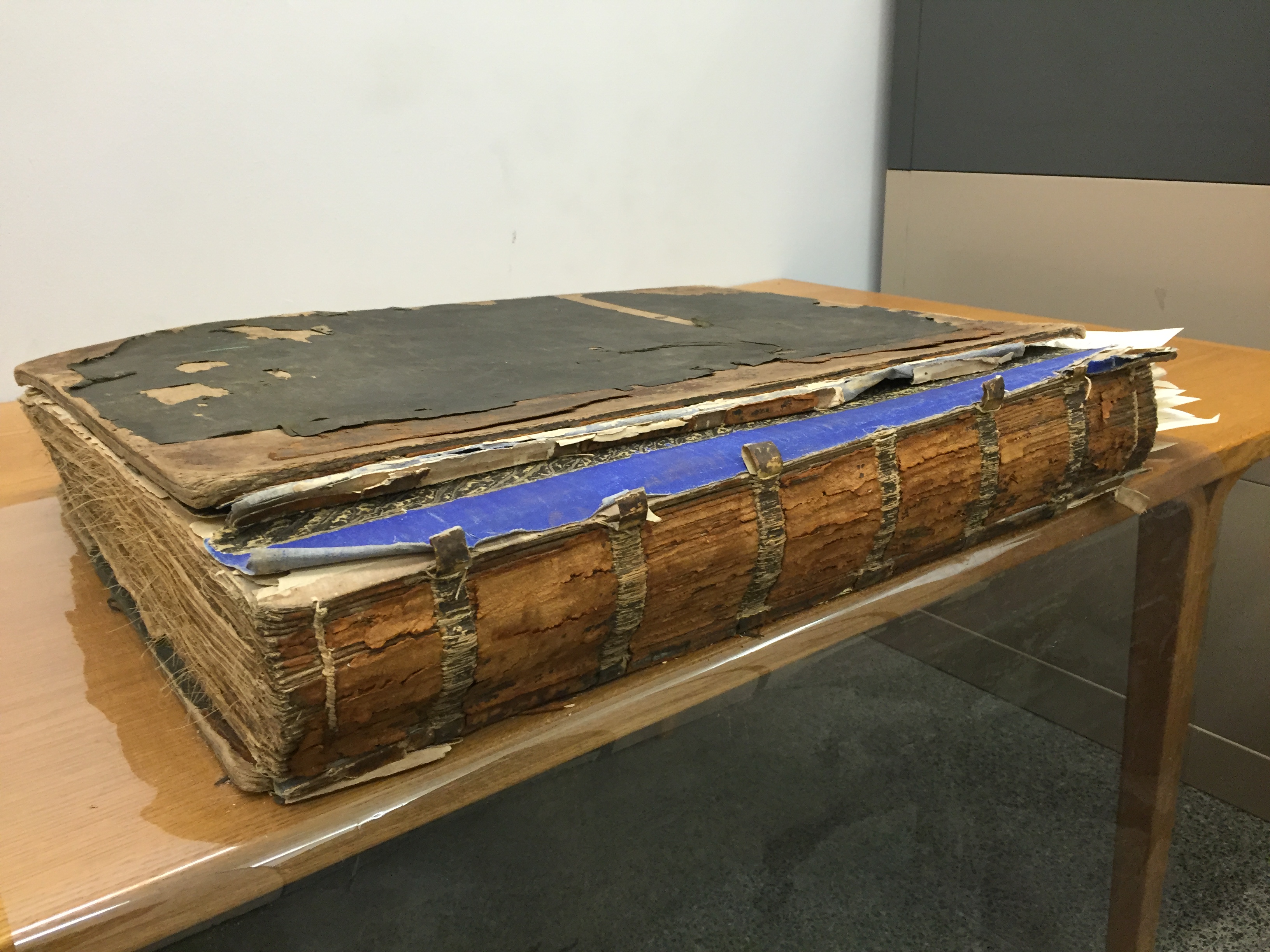
Featured in a 2012 blog by Smithsonian Libraries intern, Alyssa Pennick, The Marine Atlas, or a Seaman’s Complete Pilot for all the Principal Places in the Known World, was published in London in 1826 by John William Norie. The large folio contains forty copperplate engravings of marine charts and depicts every ocean, sea, and coastline then known. The Dibner’s copy of The Marine Atlas is the seventh edition of the atlas and was bound in New York by Henry Spear in 1856*. No other copies of Norie’s Marine Atlas are held by public collections.
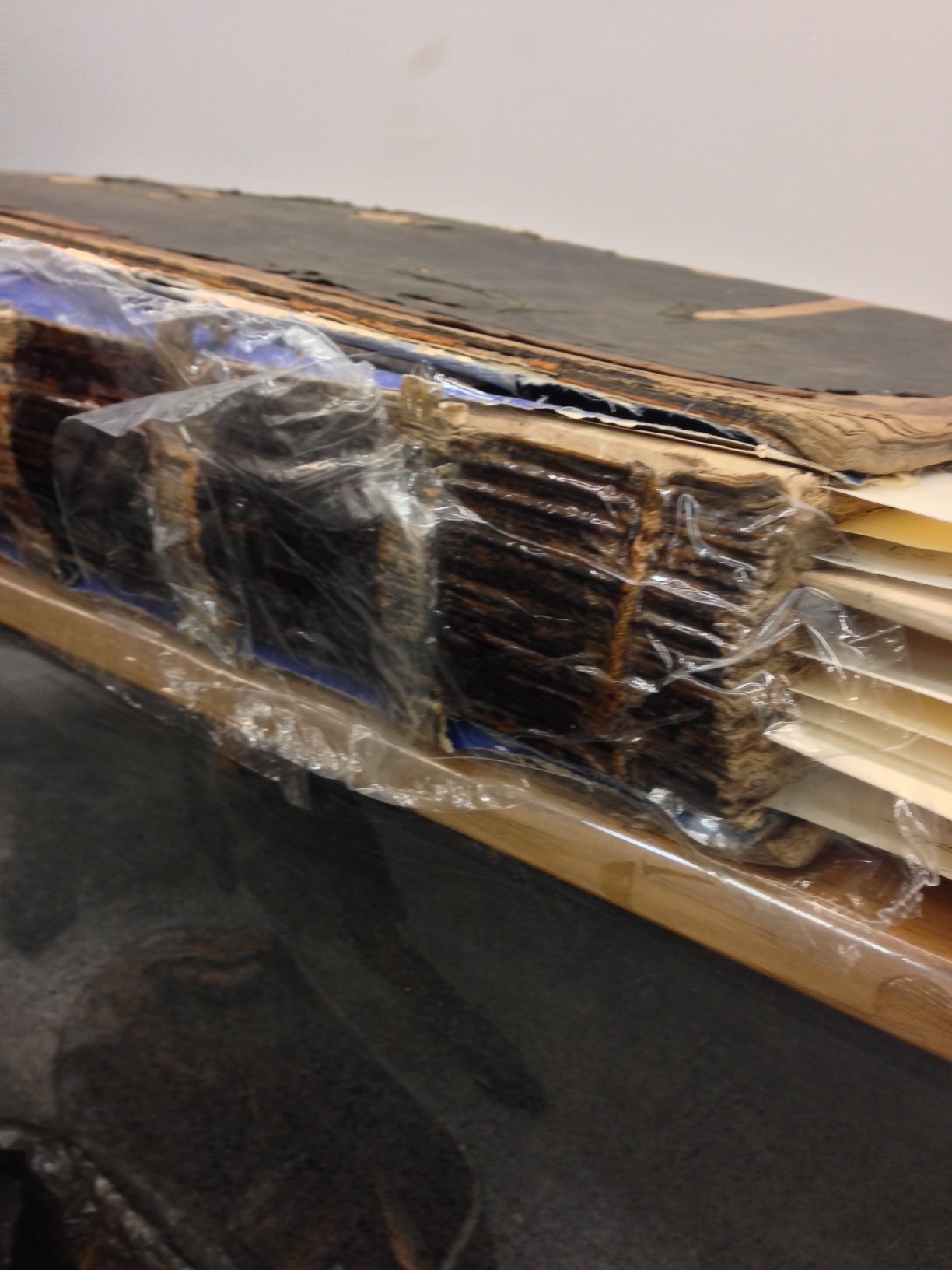
Three charts have been selection for display throughout the run of the exhibition. The illustrated charts will require page changes periodically to reduce the amount of time each is exposed to light – overexposure to light is damaging to both the paper and images. Since no other copies of Norie’s Marine Atlas are held by public collections and this copy retains its original structural parts, SIL conservators and exhibition curators have decided on an approach of minimal intervention. In order to stabilize the textblock for display – the first part of the treatment is removing the deteriorated leather covering from the spine, and leaving the existing vellum sewing supports and threads in place and visible. The loose and detached covers were secured by aero linen that also serve to line the spine, creating a more robust structure for when the book’s pages are turned every four months.
Owing to the size of the volume, all work was completed in the collections vault of the Dibner Library. This reduced any additional stress that may be caused with shipping the volume to our book conservation lab in Landover, Maryland.

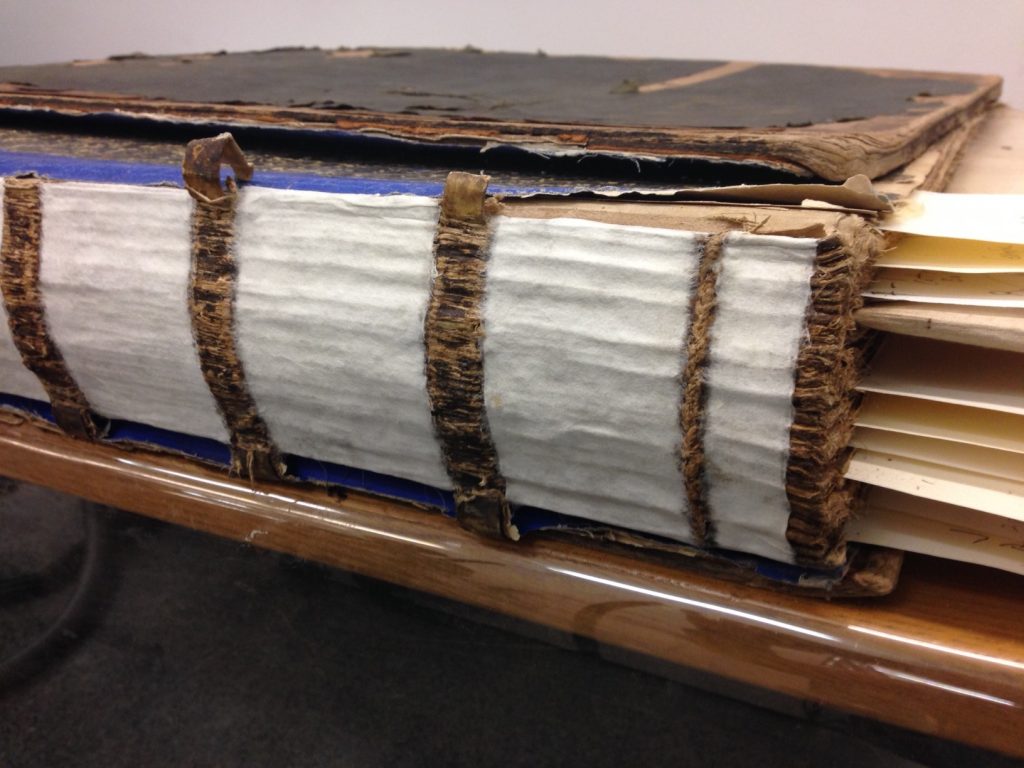
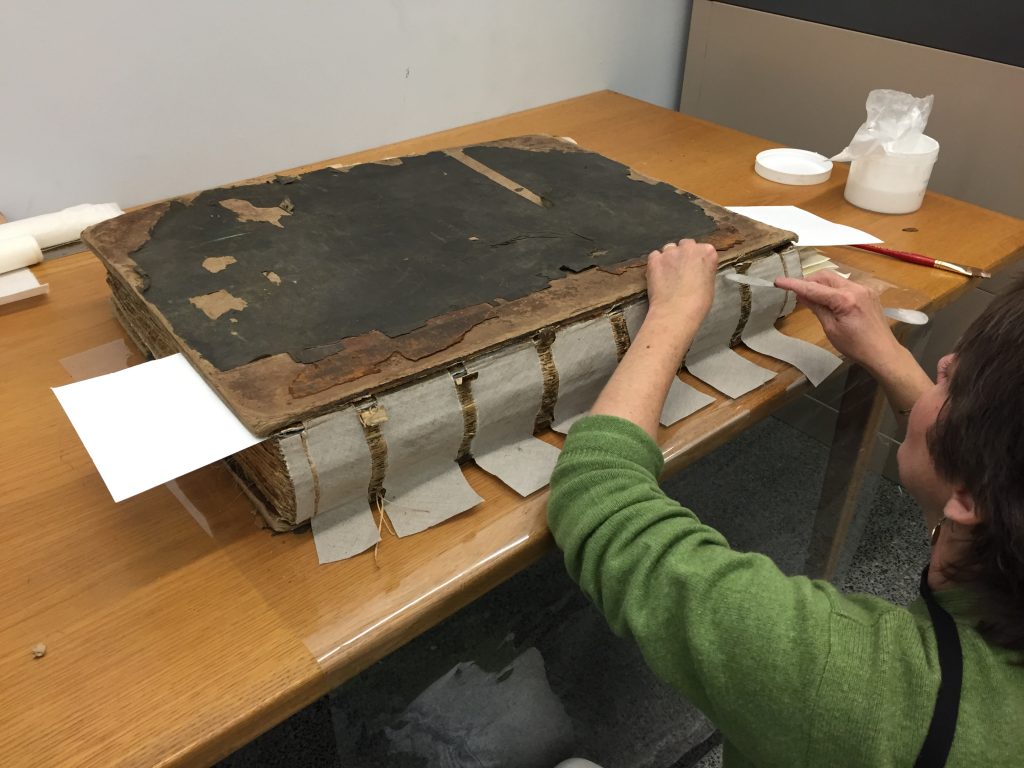
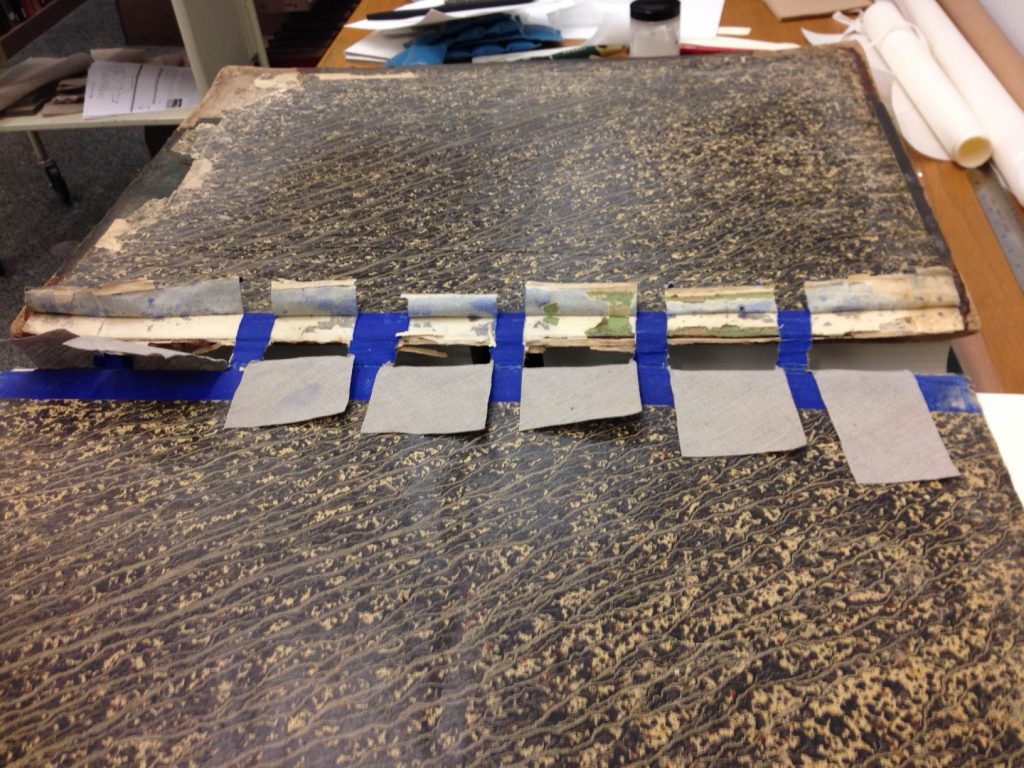
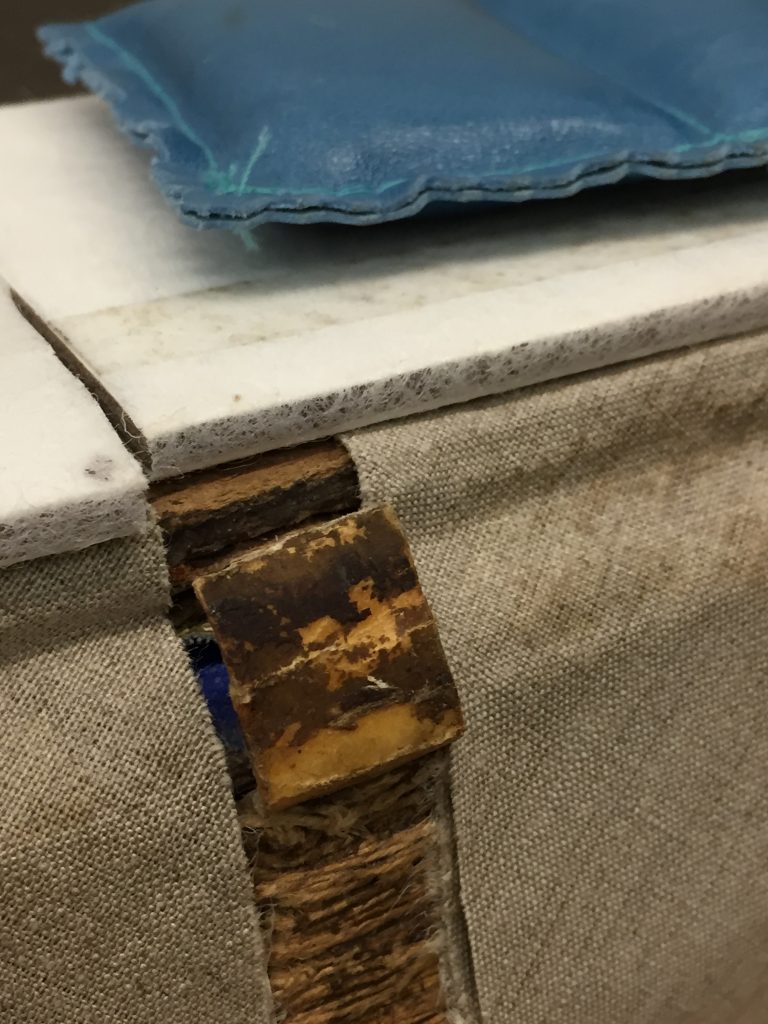

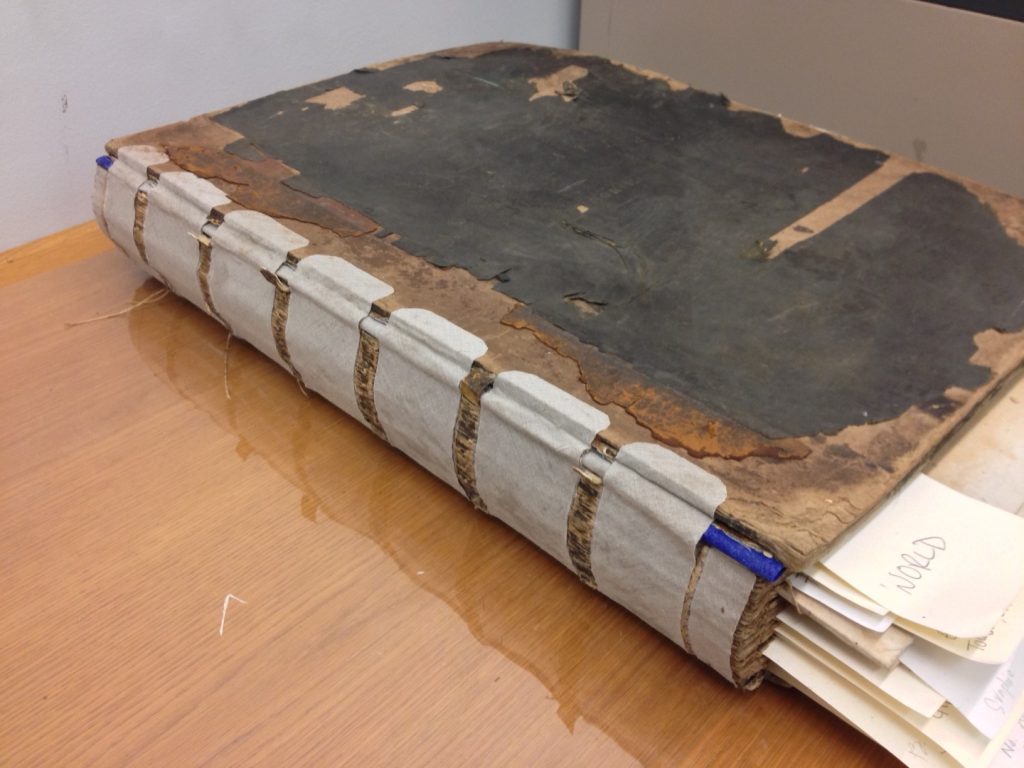
*A final note: Cross-referencing the information on the binder’s ticket displayed on the inside of the front cover shows that Henry Spear’s stationers business is listed in Trow’s New York Directory (1856-57), part of the Cooper Hewitt Smithsonian Design Library’s collection of NYC Directories.

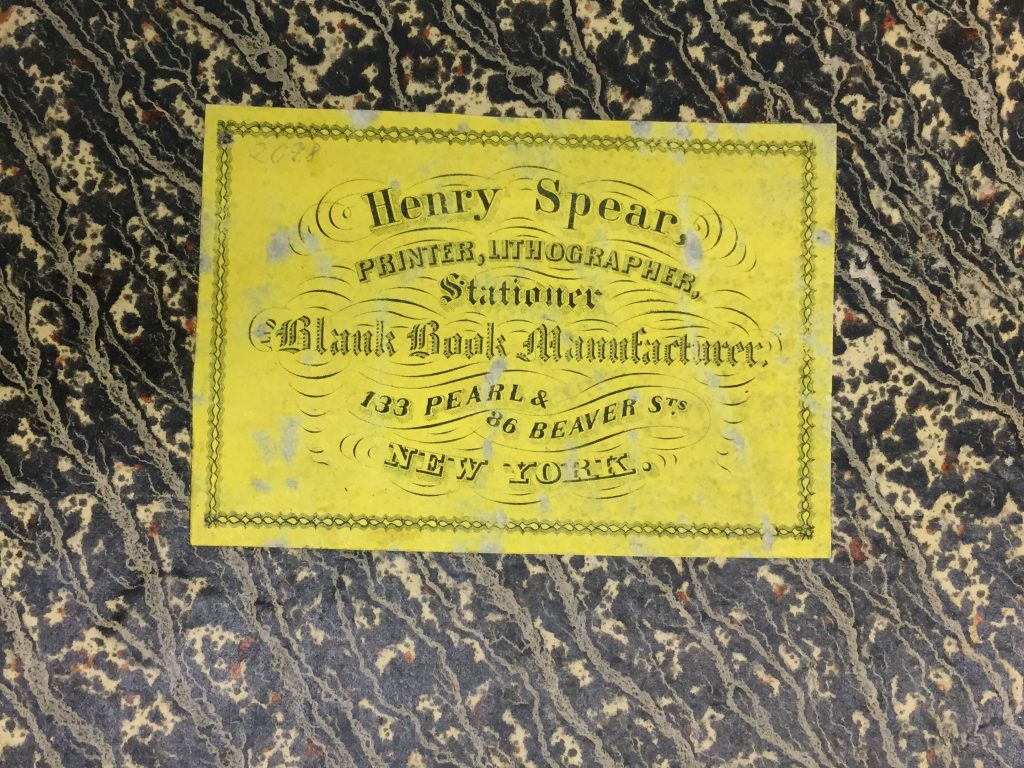
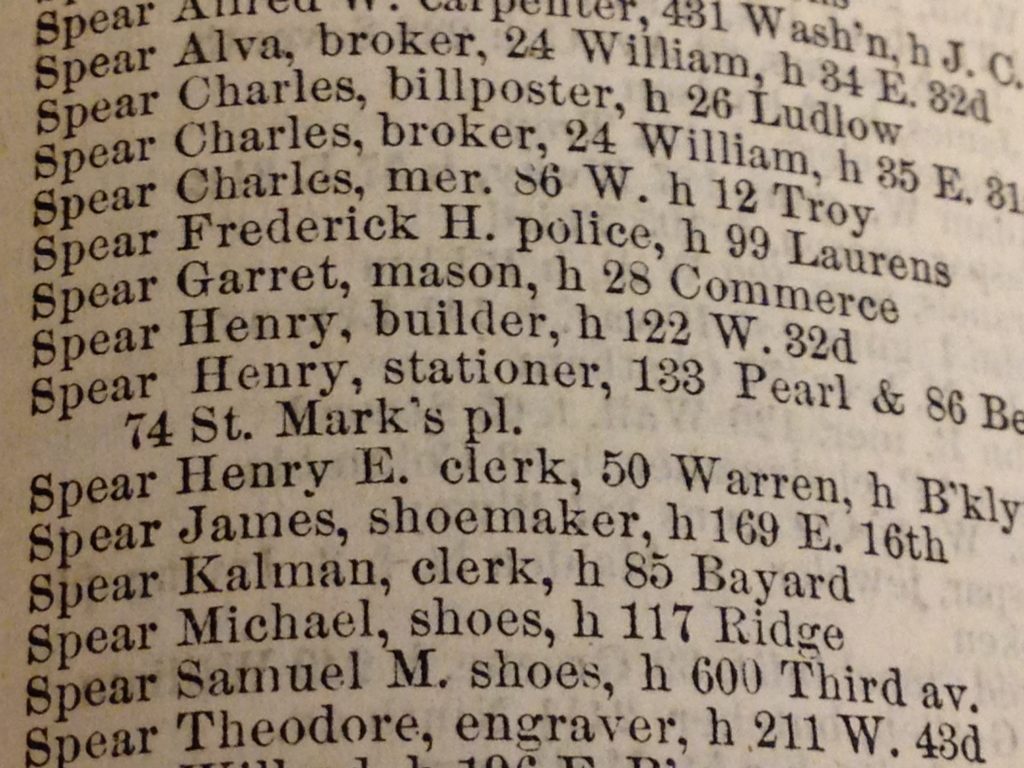
Be First to Comment